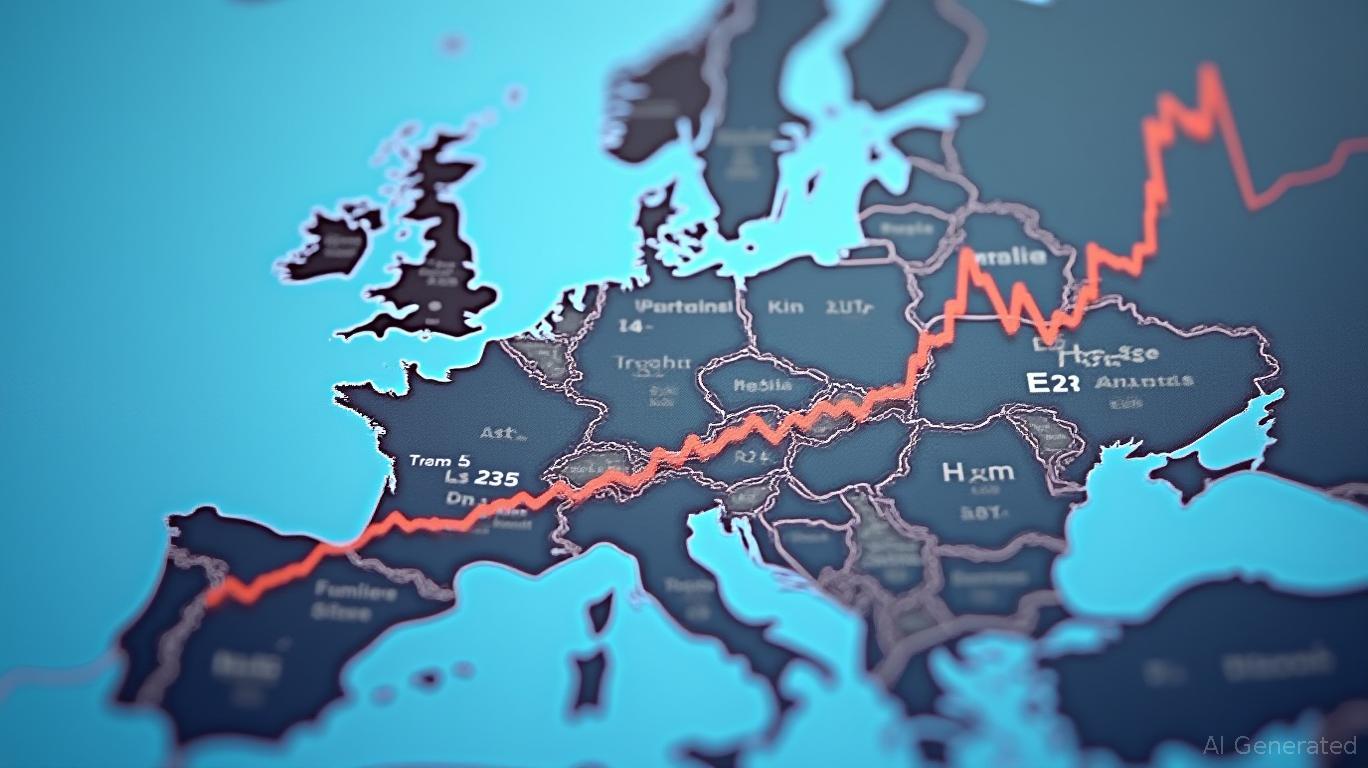ECB's Lane: Open-Mindedness and Careful Action Needed for Rate Decisions
Monday, Nov 25, 2024 1:14 pm ET
The European Central Bank (ECB) faces a complex challenge in managing monetary policy amidst heightened uncertainty. According to Philip Lane, the ECB's Chief Economist, navigating this uncertain environment requires open-mindedness and careful action in rate decisions. This article explores the implications of Lane's remarks and the strategies the ECB can employ to ensure stability and predictability for investors.
The ECB must grapple with a wide range of uncertainties, from geopolitical risks such as the Russian invasion of Ukraine to technological changes and the green transition. These factors have led to increased macroeconomic uncertainty, as reflected in various indices (Chart 1). Moreover, the risk index based on earnings calls of euro area companies indicates a higher level of risk intensity, primarily driven by macroeconomic developments and supply chain disruptions (Chart 2).

To effectively incorporate uncertainty into its decision-making process, the ECB should consider a multi-faceted approach. This includes tracking macroeconomic uncertainty, forecast disagreement, economic policy uncertainty, and financial market volatility. Additionally, the ECB could utilize a risk index based on corporate risk perceptions to gain further insights into market sentiment.
The ECB's forward guidance, which communicates its intended future policy path, should adapt to these evolving conditions. Lane's comments underscore the need for a flexible approach, given the unpredictable nature of events like the pandemic and geopolitical tensions. By incorporating risk and uncertainty into its forecasting and decision-making processes, the ECB can better navigate these challenges and maintain the stability and predictability crucial for investors.
Effective communication is key to managing market expectations during periods of high uncertainty. The ECB can achieve this by adopting a clear, transparent, and adaptable communication strategy. This includes regular updates on economic forecasts and policy decisions, clear articulation of risks and uncertainties, transparent discussion of policy trade-offs, and active engagement with markets, media, and the public.
In conclusion, the ECB must remain open-minded and act carefully in rate decisions to navigate the complex landscape of uncertainty. By incorporating risk and uncertainty into its decision-making process, adapting its forward guidance, and employing effective communication strategies, the ECB can foster trust and mitigate market volatility, even in challenging times.
The ECB's ability to manage uncertainty and maintain stability is crucial for investors, who value consistency and predictability in their portfolios. By adopting a well-rounded approach that considers multiple scenarios and incorporates a broad range of indicators, the ECB can ensure that its monetary policy supports a balanced portfolio of growth and value stocks.
The ECB must grapple with a wide range of uncertainties, from geopolitical risks such as the Russian invasion of Ukraine to technological changes and the green transition. These factors have led to increased macroeconomic uncertainty, as reflected in various indices (Chart 1). Moreover, the risk index based on earnings calls of euro area companies indicates a higher level of risk intensity, primarily driven by macroeconomic developments and supply chain disruptions (Chart 2).

To effectively incorporate uncertainty into its decision-making process, the ECB should consider a multi-faceted approach. This includes tracking macroeconomic uncertainty, forecast disagreement, economic policy uncertainty, and financial market volatility. Additionally, the ECB could utilize a risk index based on corporate risk perceptions to gain further insights into market sentiment.
The ECB's forward guidance, which communicates its intended future policy path, should adapt to these evolving conditions. Lane's comments underscore the need for a flexible approach, given the unpredictable nature of events like the pandemic and geopolitical tensions. By incorporating risk and uncertainty into its forecasting and decision-making processes, the ECB can better navigate these challenges and maintain the stability and predictability crucial for investors.
Effective communication is key to managing market expectations during periods of high uncertainty. The ECB can achieve this by adopting a clear, transparent, and adaptable communication strategy. This includes regular updates on economic forecasts and policy decisions, clear articulation of risks and uncertainties, transparent discussion of policy trade-offs, and active engagement with markets, media, and the public.
In conclusion, the ECB must remain open-minded and act carefully in rate decisions to navigate the complex landscape of uncertainty. By incorporating risk and uncertainty into its decision-making process, adapting its forward guidance, and employing effective communication strategies, the ECB can foster trust and mitigate market volatility, even in challenging times.
The ECB's ability to manage uncertainty and maintain stability is crucial for investors, who value consistency and predictability in their portfolios. By adopting a well-rounded approach that considers multiple scenarios and incorporates a broad range of indicators, the ECB can ensure that its monetary policy supports a balanced portfolio of growth and value stocks.

_b905d9341749265671656.jpg)








